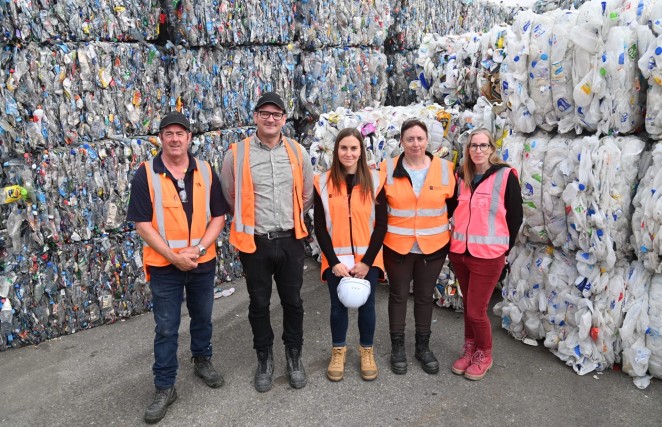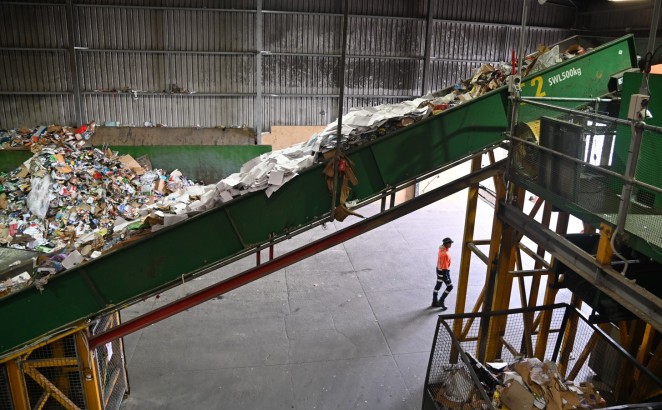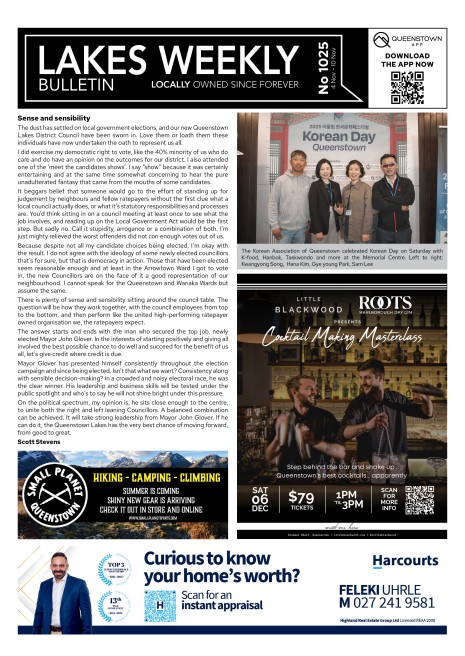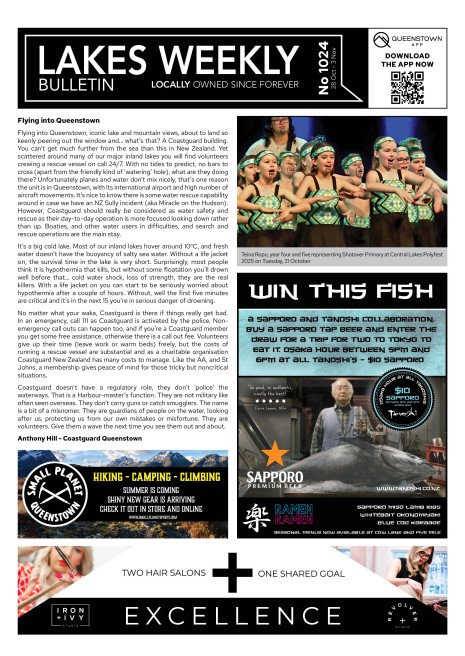If in doubt, chuck it out ...
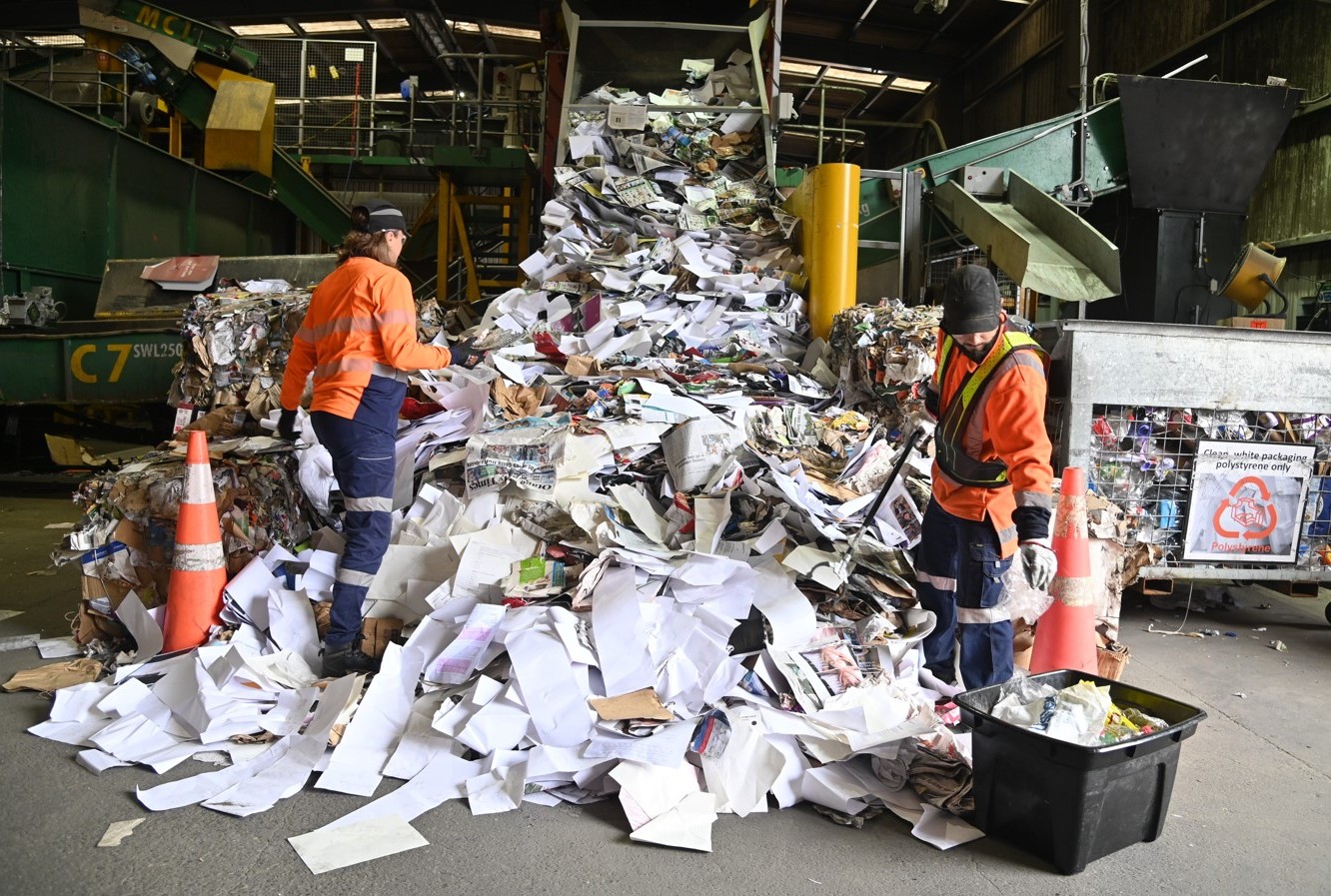
Sex toys. Live ammunition. Dead animals. Kitchen knives. Vape pens. You'd be surprised what Queenstowners put in their recycling bins.
None of these items can be recycled and some present a major risk to the dozen-or-so people who work at the Materials Recovery Facility (MRF), on Glenda Drive, Frankton, where packed paper and cardboard means there always a chance of a fire breaking out.
But the day-to-day issues faced by the workers, who sort the yellow-bin recycling by hand into cardboard, paper, various plastics, aluminum and steel, are more mundane.
It's all about pulling common contaminants from the recycling stream, so as not to ruin a whole batch.
The Ministry for the Environment has recently standardised kerbside recycling across New Zealand. For Queenstown Lakes, well ahead of the game, that means there are only a few changes.
Category 1 plastics, including meat trays, punnets and coloured bottles (like L&P), can now also go in the yellow mixed recycling bin, as well as pizza boxes free from grease and food.
But soft plastics, such as food wrapping, drinks cartons, lids, foil-lined paper-or-cardboard, and disposable coffee cups, still have to be plucked from the conveyor belts and put in the landfill - so Queenstowners can help by chucking them straight into the red bin.
For glass, which is separated into huge piles outside, contaminants are lids, drinking glasses, window glass and ceramics.
Laura Gledhill, QLDC Solid Waste Contracts Manager, says both the facility and the general public are doing well on the contaminants, however.
"Contamination in mixed recycling is about 15%. If we can reduce that figure even lower, then that is less material going to landfill," she says.
"For glass, we have less than one percent contamination, which is fantastic. The community is doing an excellent job and understands the message well."
For both the mixed recycling and glass, ensuring containers are empty and relatively clean also helps the workers.
"Whatever you put in your recycling bin, that's what these guys are putting their hands through. So, it's not a fun job by any stretch of the imagination."
The general rule is, 'if in doubt, chuck it out' - in the red landfill bin.
Once separated, the plastics are sent to either Comspec in Christchurch or Pact Recycling Solutions in Wellington, the glass goes to Auckland, cardboard to Malaysia, and paper to Indonesia and China. Steel and aluminium products are sent to China and Japan.
QLDC Senior Sustainability Advisor Kath Buttar says: "New Zealand is limited in terms of re-processing for those particular materials. There is some big work being done nationally to see what infrastructure is needed to try to improve how much of that product can be reprocessed."
QLDC has, however, done the maths to determine that is is environmentally viable to send the glass all the way to Auckland.
"There's so much less energy using recycled product in place of virgin materials. You can burn the furnaces at a lower temperature, which requires less energy and therefore less carbon, so that makes sense."
The Frankton facility, which opened in 2009, can process roughly nine to 11 tonnes a day.
On average, 126t of residential mixed recycling is collected each month in the Wakatipu, compared to 75t in Wānaka. There's also 124t of residential glass, and 70t in Wānaka.
Commercial recycling is also processed at the plant, around 53t per month of mixed recycling and 54t of glass.
As the population continues to expand, the facility will have to expand too, and modernise with the likes of robotic arms, optical sorters and other tech. With land at a premium, it's anyone's guess how much that might cost.
"Recycling itself is an expensive process. Sending stuff to landfill is also expensive. So, there's a tradeoff between the two," Gledhill says.
